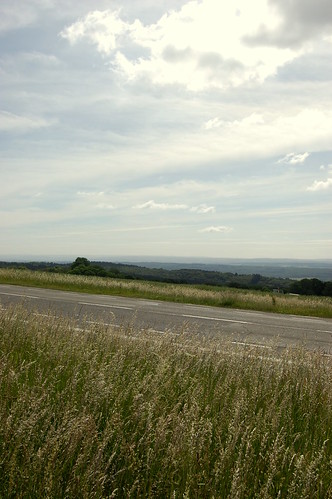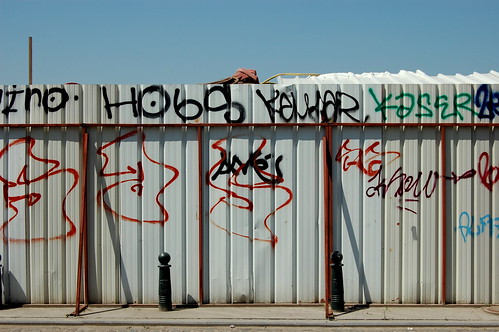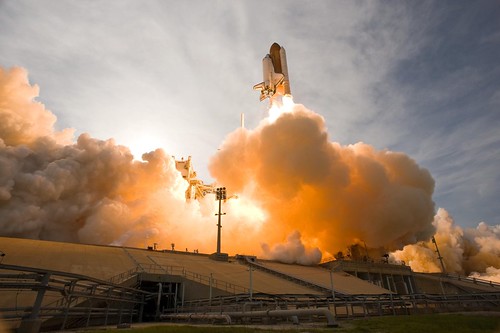The Big Roads: The Untold Story of the Engineers, Visionaries, and Trailblazers Who Created the American Superhighways
/ This morning, I pulled out of my driveway and angled down U.S. Route 2, shifting onto VT Route 12 and through the hills of Berlin and Northfield to work. Tonight, I’ll likely make my way back on the same route, but I very well might take I-89N up from Northfield to Berlin. Never once, in any of the hundreds of trips that I’ve made along that route, have I ever seriously wondered where the roads came from. They’ve always been there, for better or for worse, and they make up the foundation upon which our modern lives exist. Earl Swift’s latest book, The Big Roads: The Untold Story of the Engineers, Visionaries, and Trailblazers Who Created the American Superhighways, is a grand story that I’ve long wanted to read about: the development of the American highway and interstate system.
This morning, I pulled out of my driveway and angled down U.S. Route 2, shifting onto VT Route 12 and through the hills of Berlin and Northfield to work. Tonight, I’ll likely make my way back on the same route, but I very well might take I-89N up from Northfield to Berlin. Never once, in any of the hundreds of trips that I’ve made along that route, have I ever seriously wondered where the roads came from. They’ve always been there, for better or for worse, and they make up the foundation upon which our modern lives exist. Earl Swift’s latest book, The Big Roads: The Untold Story of the Engineers, Visionaries, and Trailblazers Who Created the American Superhighways, is a grand story that I’ve long wanted to read about: the development of the American highway and interstate system.
Despite the title about this being a history of the superhighway system, Swift’s book looks to the development of the entire vehicular road system in the United States, deftly weaving together a story that looks at the rise of the automobile, its influence on urban development and the growth of commerce in the United States over the last century. This is a book that could easily be a dry tome, mired in the tiny details at the weed level. The focus is on the personalities, however, where unassuming men shaped the character of the country: Thomas “The Chief” MacDonald, Herbert Sinclair Fairbank, and Frank Turner, all people you've likely never heard of. Swift balances neatly the personal lives of each man (and from all accounts, he really did his homework, going the extra mile, so to speak, to look into how the men were motivated) with how they each influenced the way we drive around.
At the turn of the 20th century, driving was a nightmare for urban areas. Horses and bicycles were widely used within cities, and the first cars were primitive, dangerous contraptions that were hard to use at the best of road conditions. However, due to several motivated salesmen, cars became popular: the early days of racing sprang up, cars with wheels, a seat, steering, an engine, and not much else. As the demand for cars rose, so did the political pressure for a better road network, something that many notable politicians (including President Harry Truman), built their careers on.
The development of the United State’s infrastructure seems to have come in a couple of stages: the commonly agreed upon problem of poor roads in the country and the city brought about an interesting case for the influence of federal vs. state government interaction: a massive, national project such as the first highway system (the two lane roads that criss-cross the nation) is enormously expensive, and something largely outside of what the states could afford. The process in which the money came around, but also the construction and standardization of the roadways largely follows MacDonald, who’s vision carried the country forward by eventually linking the East and West coasts by a single, uniform road network. Once a dangerous endeavor that took weeks, it soon took just days, with little danger other than from one’s fellow drivers.
The development of the US Highway system shaped just how we drive as well: the development of headlights, improved safety features and the types of vehicles that were built all came as a result of just how the American public itself changed as a result of the new freedom of mobility that the new roads offered them. At the same time, the changes in cars allowed for continued changes in just how the roads were designed: new methods for building, as well as the best colors to paint signs, and an entirely new standard design for the signs and features along the highway system.
The monumental and extraordinary growth in car ownership from the turn of the century to the mid-1950s meant that the roads designed to link together the nation were overtaxed, overcrowded and clogged with traffic jams. Swift notes that the infrastructure simply wasn’t designed to hold the volume, which led to practical problems within cities. The traffic jams of today apparently can’t compare to what it was like at that time, with too many cars flooding too few (or too small streets), partially due to missed assumptions on the growth of the automobile industry, but also some fundamental basics to how roads attract drivers and how people themselves drive.
Where MacDonald took over for the first major phase of the highway system, his retirement lead to the rise of one of his associates, Frank Turner, who got his start under MacDonald. Turner helped to shepherd a newly designed style of highway into the country to help ease the numerous traffic problems throughout the country. The superhighway system is radically different from the regular highway system: seperated from other roads, with limited access, higher speeds and designed to bring people in and out of cities and across the country. As Swift recounts the development and political wrangling that occurred, we’re introduced to a new element of highway development: land use and the necessity to destroy thousands of homes and businesses in cities in place of roadway. Protests, political stalling and civic activism arises, further changing the system. Ever wonder why Baltimore doesn’t have a highway running through it?
If there’s any flaw with the book, it’s the treatment of President Dwight Eisenhower, for whom the entire network is named for. Swift goes out of his way to denigrate the President, pointing out almost every instance of where he was on vacation or away while vital decisions were made. While I've no issue with the critical element here, I do have to wonder if the careful research present in all of the other elements of the book are present on the highest level: I can’t fathom that Eisenhower was completely in the dark for all of the elements, as he alleges. That being said, it’s a good historical example how how enormously complicated things work: the groundwork is often laid far in advance of when things get going: this is certainly the case for the roads, with all of the right people, research and motivation moving along and ramping up in the first half of the 20th century, before coming into fruition under the Eisenhower Administration, and finally completed by 1992.
Swift closes the book with a warning: the highway system, as monumental and fundamental as it is, isn’t designed forever, and with further increases in traffic volume around the country, we’re quickly running up to the point in time where large-scale problems will start to arise. Hundreds of bridges are dangerous, damaged or out of date, and road surfaces are in continual need for improvement. While this is the case, the entire system will need a large influx of investment in the coming decades, numbering in the hundreds of billions of dollars, while decreasing revenue is bringing in insufficient money to keep up with the demand. The golden age of roads may be coming to an end, but the system will last far into the future.
The Big Roads is a fantastic book that delves into American’s history and its character. Swift has done an impressive job in telling stories within stories, shedding an interesting light on the nature of the mid-20th century. It’s exciting, exhilarating, and interesting throughout, with a bright cast of characters doing what very well might have been impossible, while building something that has made the country what it is today.

 This year has seen several novels that I've come to with high expectations, only to be let down by a poor story, characters and writing. M.M. Buckner's latest novel, The Gravity Pilot, falls into this trend. Despite a strong premise and interesting world, the book is a lack-luster read, one that left me frustrated and awaiting for the final chapters.
This year has seen several novels that I've come to with high expectations, only to be let down by a poor story, characters and writing. M.M. Buckner's latest novel, The Gravity Pilot, falls into this trend. Despite a strong premise and interesting world, the book is a lack-luster read, one that left me frustrated and awaiting for the final chapters.
 China Miéville has been on a bit of a tear to explore every genre through his books. With Embassytown, he turns from his earthbound adventures of late (The City and The City and Kraken), and goes into deep space, for a truly alien world.
China Miéville has been on a bit of a tear to explore every genre through his books. With Embassytown, he turns from his earthbound adventures of late (The City and The City and Kraken), and goes into deep space, for a truly alien world.
 On the airplane over to Europe, I was a bit puzzled by the screening of X-Men 3: The Last Stand, but because I couldn't sleep, I watched it, and remembered just how bad it was. Where the first two X-Men films were fun, and fairly well done, the third felt rushed, overcooked, with no cohesive storyline, characters and action that didn't make sense, but with some definite promise to it. It's unfortunate that it was such a train wreck, and it put me off from the follow-up Wolverine film, which I've still not seen. Thus, the news that there was another X-Men film coming out simply didn't register, until it became fairly clear that this was going to be a film that was somewhat different.
On the airplane over to Europe, I was a bit puzzled by the screening of X-Men 3: The Last Stand, but because I couldn't sleep, I watched it, and remembered just how bad it was. Where the first two X-Men films were fun, and fairly well done, the third felt rushed, overcooked, with no cohesive storyline, characters and action that didn't make sense, but with some definite promise to it. It's unfortunate that it was such a train wreck, and it put me off from the follow-up Wolverine film, which I've still not seen. Thus, the news that there was another X-Men film coming out simply didn't register, until it became fairly clear that this was going to be a film that was somewhat different.






 Historian Dr. Michael Robinson, of the University of Hartford, opened his talk with a William Falkner quote that helped frame the
Historian Dr. Michael Robinson, of the University of Hartford, opened his talk with a William Falkner quote that helped frame the 

 I vividly remember the events of September 11th. I was at my high school’s library, on one of the computers when I came across the news on a news site, and over the course of the afternoon, we learned that it was no accident, but a deliberate attack against the country. I remember being concerned that we didn’t know who did it, until the news began to shift over the next couple of days to the Middle East. In my 10th grade history class, we listened to the radio. The road was dead silent as the commentators spoke about the event. That day has defined the existence of my generation, in every single facet of life, as we’ve watched the towers tumble into two wars across the world, while our domestic society has undergone major shifts and changes that we’ve gone along with in the name of security and safety. One man changed the world, and he’s now dead.
I vividly remember the events of September 11th. I was at my high school’s library, on one of the computers when I came across the news on a news site, and over the course of the afternoon, we learned that it was no accident, but a deliberate attack against the country. I remember being concerned that we didn’t know who did it, until the news began to shift over the next couple of days to the Middle East. In my 10th grade history class, we listened to the radio. The road was dead silent as the commentators spoke about the event. That day has defined the existence of my generation, in every single facet of life, as we’ve watched the towers tumble into two wars across the world, while our domestic society has undergone major shifts and changes that we’ve gone along with in the name of security and safety. One man changed the world, and he’s now dead. In Will McIntosh's debut novel, Soft Apocalypse, the world as we know it ends with a whimper, not a bang. The end of America and the rest of the world comes out of our over indulgence, use of resources and all of the problems in society reaching a dull roar that tears down the world as we know it. This story takes a small cast of characters and looks at them over a much longer point of time than more novels, providing a unique perspective on what the future might hold.
In Will McIntosh's debut novel, Soft Apocalypse, the world as we know it ends with a whimper, not a bang. The end of America and the rest of the world comes out of our over indulgence, use of resources and all of the problems in society reaching a dull roar that tears down the world as we know it. This story takes a small cast of characters and looks at them over a much longer point of time than more novels, providing a unique perspective on what the future might hold.
 Each year, the Colby Symposium awards the Colby Award to a first notable book from an author that deals fundamentally with the nature of warfare and contributes substantially to the field. During the awards dinner this year, executive director and Norwich University Alum, Carlo D'Este said that it was rare that the entire committee universally agrees on a single book, but that this was the case for the 2011 prize, going to Karl Marlantes, with his first acclaimed novel, Matterhorn.
Each year, the Colby Symposium awards the Colby Award to a first notable book from an author that deals fundamentally with the nature of warfare and contributes substantially to the field. During the awards dinner this year, executive director and Norwich University Alum, Carlo D'Este said that it was rare that the entire committee universally agrees on a single book, but that this was the case for the 2011 prize, going to Karl Marlantes, with his first acclaimed novel, Matterhorn. The third talk of the Colby Symposium featured author Doug Stanton, author of the widely acclaimed New York Times bestseller
The third talk of the Colby Symposium featured author Doug Stanton, author of the widely acclaimed New York Times bestseller  The second presentation in the Colby Symposium at Norwich University was titled 'Afghanistan: America's Second Vietnam or its First Victory over Al Qaida?', by Jack Segal. Segal is the Chief Political Advisor to the NATO Joint Force Command Commander, General Wolf Langheld. He is a distinguished figure, having served two tours in Vietnam with the 4th Infantry Division during the Tet Offensive and again with the 25th Infantry Division, where he earned the Bronze Star and Meritorious Service Medal. Since the war and subsequent education, he's held numerous posts in the US Diplomatic service, playing key roles in the negotiations with the Strategic Arms Reduction Talks between the US and the USSR, and was named the first US Consul General in central Russia in 1994 and became the Chief of Staff to the Under Secretary of State for Arms Control and International Security, Lynn Davis in 1995. Following that, he worked with the National Security Council at the White House as the director for Russia, Ukraine and Eurasia, and worked with the White House's Kosovo group. in 1999, he became the NSA Director for Non-Proliferation, and joined NATO in 2000. He is also a Distinguished Senior Fellow at the US National Defense University. To say that he's had a distinguished and important role in foreign affairs is a bit of an understatement.
The second presentation in the Colby Symposium at Norwich University was titled 'Afghanistan: America's Second Vietnam or its First Victory over Al Qaida?', by Jack Segal. Segal is the Chief Political Advisor to the NATO Joint Force Command Commander, General Wolf Langheld. He is a distinguished figure, having served two tours in Vietnam with the 4th Infantry Division during the Tet Offensive and again with the 25th Infantry Division, where he earned the Bronze Star and Meritorious Service Medal. Since the war and subsequent education, he's held numerous posts in the US Diplomatic service, playing key roles in the negotiations with the Strategic Arms Reduction Talks between the US and the USSR, and was named the first US Consul General in central Russia in 1994 and became the Chief of Staff to the Under Secretary of State for Arms Control and International Security, Lynn Davis in 1995. Following that, he worked with the National Security Council at the White House as the director for Russia, Ukraine and Eurasia, and worked with the White House's Kosovo group. in 1999, he became the NSA Director for Non-Proliferation, and joined NATO in 2000. He is also a Distinguished Senior Fellow at the US National Defense University. To say that he's had a distinguished and important role in foreign affairs is a bit of an understatement.

 Climate change is here to stay. It’s a bit of a foregone conclusion at this point, given the rise of human industrialized society and the scientific evidence that is increasingly supporting the idea that we’ve influenced how we have changed our climate to the point where it’ll cause problems for life as we know it. As such, it’s a little surprising that there isn’t more of an impact in the science fiction realm. I think that’s about to change, as that reality sinks in a little more, and it seems that there are a growing number of books that are starting to come out about the topic, which I’m rather happy about. In 2009, Paolo Bacigalupi’s novel The Windup Girl was released to great acclaim, set in a post-oil world, and is something of a novel that demonstrated what type of story really works.
Climate change is here to stay. It’s a bit of a foregone conclusion at this point, given the rise of human industrialized society and the scientific evidence that is increasingly supporting the idea that we’ve influenced how we have changed our climate to the point where it’ll cause problems for life as we know it. As such, it’s a little surprising that there isn’t more of an impact in the science fiction realm. I think that’s about to change, as that reality sinks in a little more, and it seems that there are a growing number of books that are starting to come out about the topic, which I’m rather happy about. In 2009, Paolo Bacigalupi’s novel The Windup Girl was released to great acclaim, set in a post-oil world, and is something of a novel that demonstrated what type of story really works. I have a feeling that my reading will become a little more convoluted in a bit when I have a couple of reviewer copies coming in, and with a couple of books on the docket right at the moment, with some others in the queue, I need to get my head straight.
I have a feeling that my reading will become a little more convoluted in a bit when I have a couple of reviewer copies coming in, and with a couple of books on the docket right at the moment, with some others in the queue, I need to get my head straight.